Your Post transcriptional modification examples images are ready. Post transcriptional modification examples are a topic that is being searched for and liked by netizens today. You can Get the Post transcriptional modification examples files here. Get all royalty-free photos and vectors.
If you’re looking for post transcriptional modification examples images information connected with to the post transcriptional modification examples keyword, you have come to the right site. Our site always gives you hints for seeing the highest quality video and image content, please kindly search and locate more informative video articles and graphics that fit your interests.
Post Transcriptional Modification Examples. Post-Transcriptional Modification 71 Transcription of RNA from DNA All cellular RNAs are synthesized from a DNA template through the process of transcription Figure 71. Post-translational modifications take place also in cytosol. There are many types of post-transcriptional modifications achieved through a diverse class of molecular mechanisms. Post-transcriptional modification includes the processes of polyadenylation 5 capping and splicing.
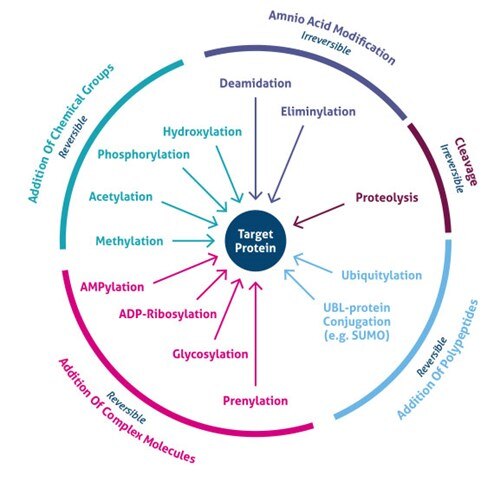 Post Translational Modifications An Overview Proteintech Group From ptglab.com
Post Translational Modifications An Overview Proteintech Group From ptglab.com
Some of them for example phosphorylation can happen repeatedly throughout the life of the protein and are the frequent way of regulating protein activity for example turning the enzyme on and off. Early in 2012 Kessler et al. For example many proteins are modified shortly after translation is completed to mediate proper protein folding or stability or to direct the nascent protein to distinct cellular compartments eg nucleus. Post-Transcriptional Modification 71 Transcription of RNA from DNA All cellular RNAs are synthesized from a DNA template through the process of transcription Figure 71. RNA processing such as splicing capping and poly-A tail addition. Post-translational modification can occur at any step in the life cycle of a protein.
Post-Transcriptional Modification 71 Transcription of RNA from DNA All cellular RNAs are synthesized from a DNA template through the process of transcription Figure 71.
In the sections below well discuss some common types of gene regulation that. Examples of Post-translational modifications through their amino acids Amino Acids Post-translatonal Modifications Amino-terminal amino. The 5 capping reaction replaces the triphosphate group at the 5 end of the RNA chain with a special nucleotide that is referred to as the 5 cap. Once the 5 end of a nascent RNA extends free of the RNAP II approximately 20-30 nt it is ready to be capped by a 7-methylguanosine structure. The first of the post-transcriptional events is 5 end capping. There are many types of post-transcriptional modifications achieved through a diverse class of molecular mechanisms.
 Source: slideshare.net
Source: slideshare.net
Some of them for example phosphorylation can happen repeatedly throughout the life of the protein and are the frequent way of regulating protein activity for example turning the enzyme on and off. A notable example is the conversion of precursor messenger RNA into mature messenger RNA mRNA which includes splicing and occurs prior to protein synthesis. One paradigmatic example is the relationship between sumoylation and c-Myc oncoprotein. There are many types of post-transcriptional modifications achieved through a diverse class of molecular mechanisms. In this section we will discuss the three processes that make up these post- transcriptional modifications.
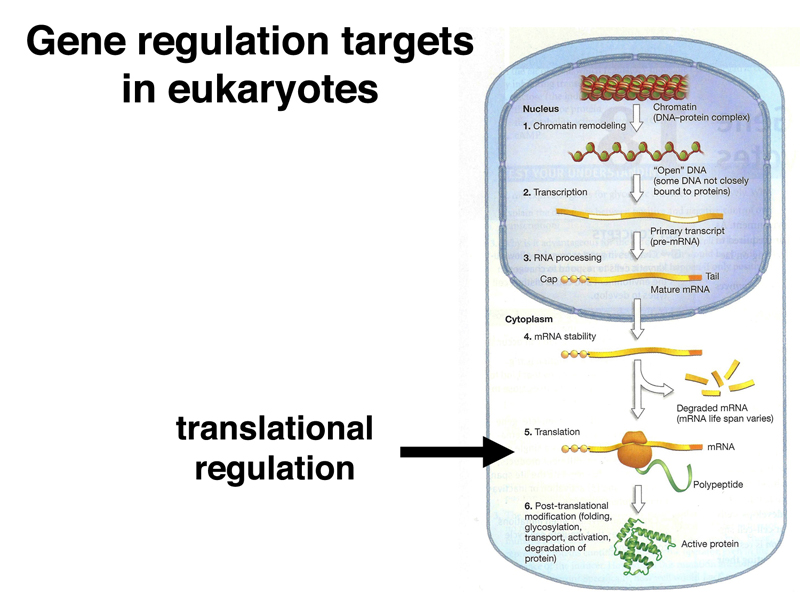 Source: discoveryandinnovation.com
Source: discoveryandinnovation.com
Post-transcriptional modifications ensure that the correct RNA transcripts are produced and that the correct proteins are translated. The pre-mRNA has to go through some modifications to become a mature mRNA molecule that can leave the nucleus and be translated. Polyadenylation is the addition of adenine bases the poly-A tail to the 3 end of the RNA primary transcript. RNA polymerase sits down there it starts transcribing it makes an mRNA it hits the transcriptional termination signal it stops and then this RNA gets processed in interesting ways. Protein modifications such as addition of chemical groups.
 Source: slideshare.net
Source: slideshare.net
Post-Transcriptional Modification 71 Transcription of RNA from DNA All cellular RNAs are synthesized from a DNA template through the process of transcription Figure 71. Protein modifications such as addition of chemical groups. Post-transcriptional modification includes the processes of polyadenylation 5 capping and splicing. In the sections below well discuss some common types of gene regulation that. RNA polymerase sits down there it starts transcribing it makes an mRNA it hits the transcriptional termination signal it stops and then this RNA gets processed in interesting ways.
 Source: ib.bioninja.com.au
Source: ib.bioninja.com.au
Post-translational modifications take place also in cytosol. Poly A tail - One post-transcriptional modification made in the cell nucleus. This 5 cap serves as a recognition site for transport of. After these modifications have been completed the mature mRNA molecules have to be translocated into the cytoplasm where protein synthesis occurs. These include splicing capping and addition of a poly-A tail all of which can potentially be regulated sped up slowed down or altered to result in a different product.
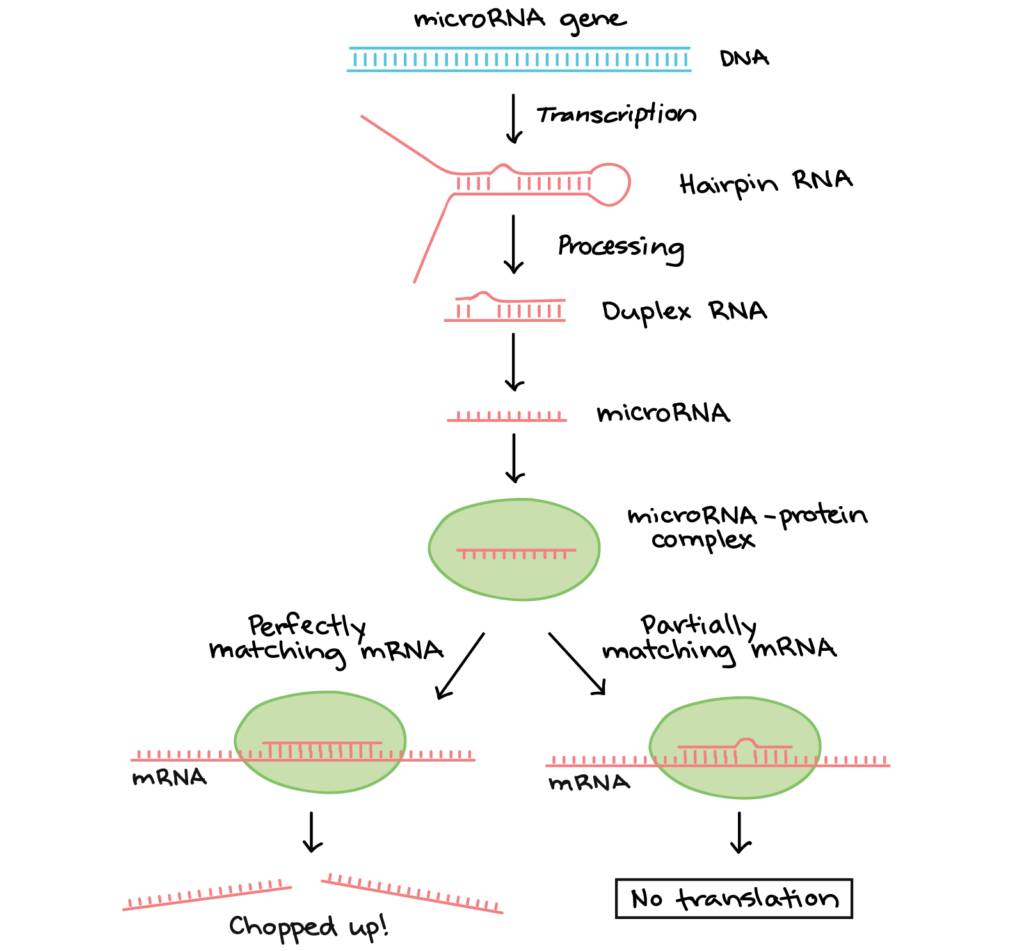 Source: courses.lumenlearning.com
Source: courses.lumenlearning.com
A string of up to 500 adenines added to the 3 end of primary RNA transcripts. A notable example is the conversion of precursor messenger RNA into mature messenger RNA mRNA which includes splicing and occurs prior to protein synthesis. Post-transcriptional modification includes the processes of polyadenylation 5 capping and splicing. The first one is at the five prime end remember five prime to three prime a funny modification is. The 5 capping reaction replaces the triphosphate group at the 5 end of the RNA chain with a special nucleotide that is referred to as the 5 cap.
 Source: slideshare.net
Source: slideshare.net
Post-translational modification can occur at any step in the life cycle of a protein. Reported the discovery of the sumo-activating enzyme SAE12 which can cause defective sumoylation switching the transcriptional subprogram of Myc from activation to repression leading to mitotic catastrophe and cell death. Once the 5 end of a nascent RNA extends free of the RNAP II approximately 20-30 nt it is ready to be capped by a 7-methylguanosine structure. There are many types of post-transcriptional modifications achieved through a diverse class of molecular mechanisms. RNA processing such as splicing capping and poly-A tail addition.
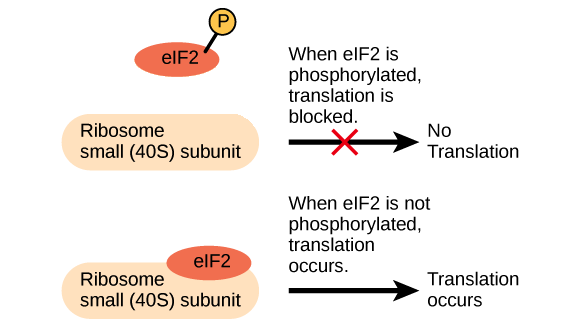 Source: khanacademy.org
Source: khanacademy.org
Protein modifications such as addition of chemical groups. These include splicing capping and addition of a poly-A tail all of which can potentially be regulated sped up slowed down or altered to result in a different product. Post-translational modification can occur at any step in the life cycle of a protein. 5 capping addition of the poly A tail and splicing. Post-transcriptional modifications of pre-mRNA such as capping splicing and polyadenylation take place in the nucleus.
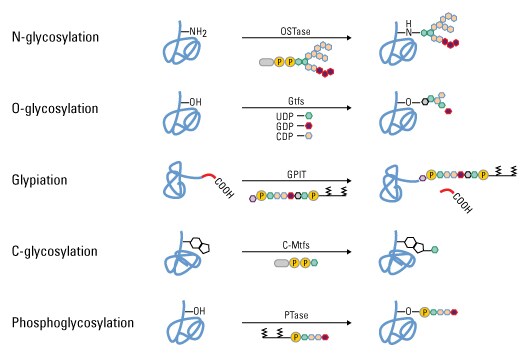 Source: thermofisher.com
Source: thermofisher.com
These include splicing capping and addition of a poly-A tail all of which can potentially be regulated sped up slowed down or altered to result in a different product. Early in 2012 Kessler et al. The first of the post-transcriptional events is 5 end capping. A notable example is the conversion of precursor messenger RNA into mature messenger RNA mRNA which includes splicing and occurs prior to protein synthesis. Addition catalyzed by the enzyme poly A polymerase that recognizes the sequence AAUAAA.
 Source: slideshare.net
Source: slideshare.net
Polyadenylation is the addition of adenine bases the poly-A tail to the 3 end of the RNA primary transcript. There are many types of post-transcriptional modifications achieved through a diverse class of molecular mechanisms. Early in 2012 Kessler et al. 5 capping addition of the poly A tail and splicing. Post-transcriptional modification includes the processes of polyadenylation 5 capping and splicing.
 Source: slideshare.net
Source: slideshare.net
Some of them for example phosphorylation can happen repeatedly throughout the life of the protein and are the frequent way of regulating protein activity for example turning the enzyme on and off. Polyadenylation is the addition of adenine bases the poly-A tail to the 3 end of the RNA primary transcript. Reported the discovery of the sumo-activating enzyme SAE12 which can cause defective sumoylation switching the transcriptional subprogram of Myc from activation to repression leading to mitotic catastrophe and cell death. For example many proteins are modified shortly after translation is completed to mediate proper protein folding or stability or to direct the nascent protein to distinct cellular compartments eg nucleus. Poly A tail - One post-transcriptional modification made in the cell nucleus.
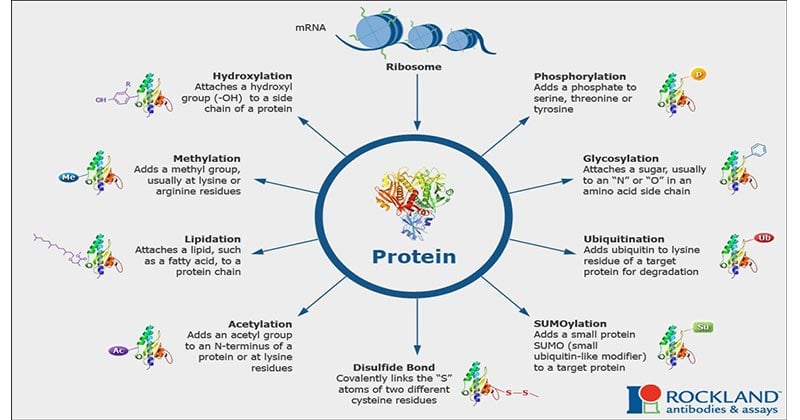 Source: microbenotes.com
Source: microbenotes.com
Post-transcriptional modification includes the processes of polyadenylation 5 capping and splicing. After these modifications have been completed the mature mRNA molecules have to be translocated into the cytoplasm where protein synthesis occurs. Post-Transcriptional Modification 71 Transcription of RNA from DNA All cellular RNAs are synthesized from a DNA template through the process of transcription Figure 71. For example many proteins are modified shortly after translation is completed to mediate proper protein folding or stability or to direct the nascent protein to distinct cellular compartments eg nucleus. The 5 capping reaction replaces the triphosphate group at the 5 end of the RNA chain with a special nucleotide that is referred to as the 5 cap.
 Source: ptglab.com
Source: ptglab.com
For example many proteins are modified shortly after translation is completed to mediate proper protein folding or stability or to direct the nascent protein to distinct cellular compartments eg nucleus. Once the 5 end of a nascent RNA extends free of the RNAP II approximately 20-30 nt it is ready to be capped by a 7-methylguanosine structure. Messenger RNA mRNA translation and lifetime in the cytosol. A string of up to 500 adenines added to the 3 end of primary RNA transcripts. The pre-mRNA has to go through some modifications to become a mature mRNA molecule that can leave the nucleus and be translated.
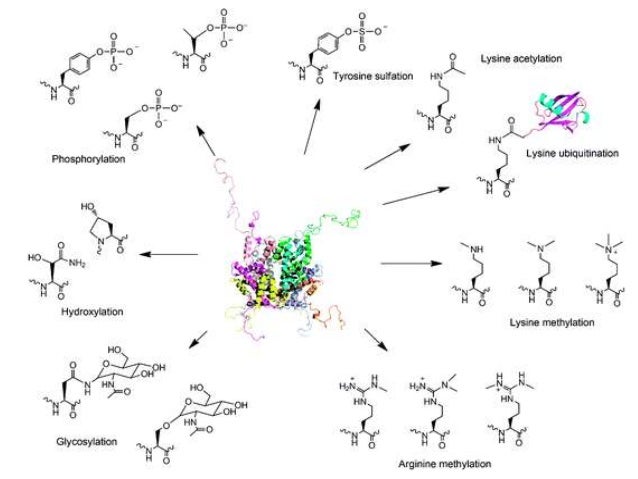 Source: slideshare.net
Source: slideshare.net
5 capping addition of the poly A tail and splicing. For example many proteins are modified shortly after translation is completed to mediate proper protein folding or stability or to direct the nascent protein to distinct cellular compartments eg nucleus. RNA processing such as splicing capping and poly-A tail addition. Protein modifications such as addition of chemical groups. Polyadenylation is the addition of adenine bases the poly-A tail to the 3 end of the RNA primary transcript.
 Source: sciencedirect.com
Source: sciencedirect.com
In the sections below well discuss some common types of gene regulation that. Some of them for example phosphorylation can happen repeatedly throughout the life of the protein and are the frequent way of regulating protein activity for example turning the enzyme on and off. The first of the post-transcriptional events is 5 end capping. The pre-mRNA has to go through some modifications to become a mature mRNA molecule that can leave the nucleus and be translated. One paradigmatic example is the relationship between sumoylation and c-Myc oncoprotein.
 Source: slideshare.net
Source: slideshare.net
Protein modifications such as addition of chemical groups. In the sections below well discuss some common types of gene regulation that. RNA polymerase sits down there it starts transcribing it makes an mRNA it hits the transcriptional termination signal it stops and then this RNA gets processed in interesting ways. The pre-mRNA has to go through some modifications to become a mature mRNA molecule that can leave the nucleus and be translated. The 5 capping reaction replaces the triphosphate group at the 5 end of the RNA chain with a special nucleotide that is referred to as the 5 cap.
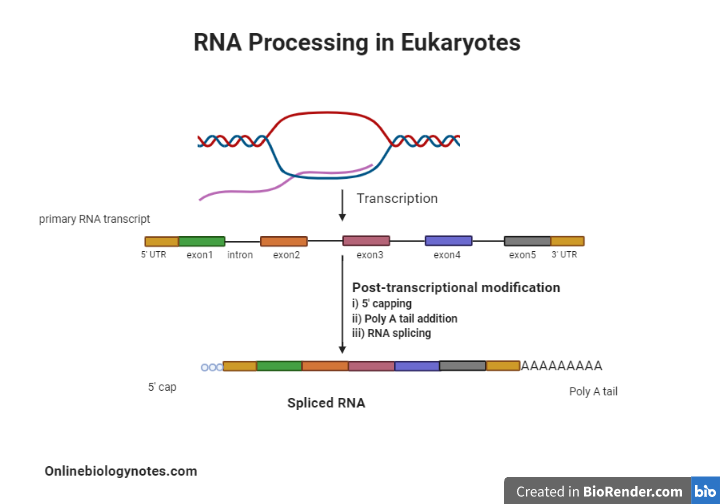 Source: onlinebiologynotes.com
Source: onlinebiologynotes.com
These include splicing capping and addition of a poly-A tail all of which can potentially be regulated sped up slowed down or altered to result in a different product. RNA polymerase sits down there it starts transcribing it makes an mRNA it hits the transcriptional termination signal it stops and then this RNA gets processed in interesting ways. Post-translational modification can occur at any step in the life cycle of a protein. Once the 5 end of a nascent RNA extends free of the RNAP II approximately 20-30 nt it is ready to be capped by a 7-methylguanosine structure. The pre-mRNA has to go through some modifications to become a mature mRNA molecule that can leave the nucleus and be translated.
 Source: slideshare.net
Source: slideshare.net
For example many proteins are modified shortly after translation is completed to mediate proper protein folding or stability or to direct the nascent protein to distinct cellular compartments eg nucleus. A string of up to 500 adenines added to the 3 end of primary RNA transcripts. Messenger RNA mRNA translation and lifetime in the cytosol. For example many proteins are modified shortly after translation is completed to mediate proper protein folding or stability or to direct the nascent protein to distinct cellular compartments eg nucleus. Early in 2012 Kessler et al.
 Source: sciencedirect.com
Source: sciencedirect.com
Post-translational modification can occur at any step in the life cycle of a protein. Protein modifications such as addition of chemical groups. Once the 5 end of a nascent RNA extends free of the RNAP II approximately 20-30 nt it is ready to be capped by a 7-methylguanosine structure. The 5 capping reaction replaces the triphosphate group at the 5 end of the RNA chain with a special nucleotide that is referred to as the 5 cap. Transcription is in many ways similar to the process of replication but one fundamental.
This site is an open community for users to submit their favorite wallpapers on the internet, all images or pictures in this website are for personal wallpaper use only, it is stricly prohibited to use this wallpaper for commercial purposes, if you are the author and find this image is shared without your permission, please kindly raise a DMCA report to Us.
If you find this site adventageous, please support us by sharing this posts to your own social media accounts like Facebook, Instagram and so on or you can also bookmark this blog page with the title post transcriptional modification examples by using Ctrl + D for devices a laptop with a Windows operating system or Command + D for laptops with an Apple operating system. If you use a smartphone, you can also use the drawer menu of the browser you are using. Whether it’s a Windows, Mac, iOS or Android operating system, you will still be able to bookmark this website.






